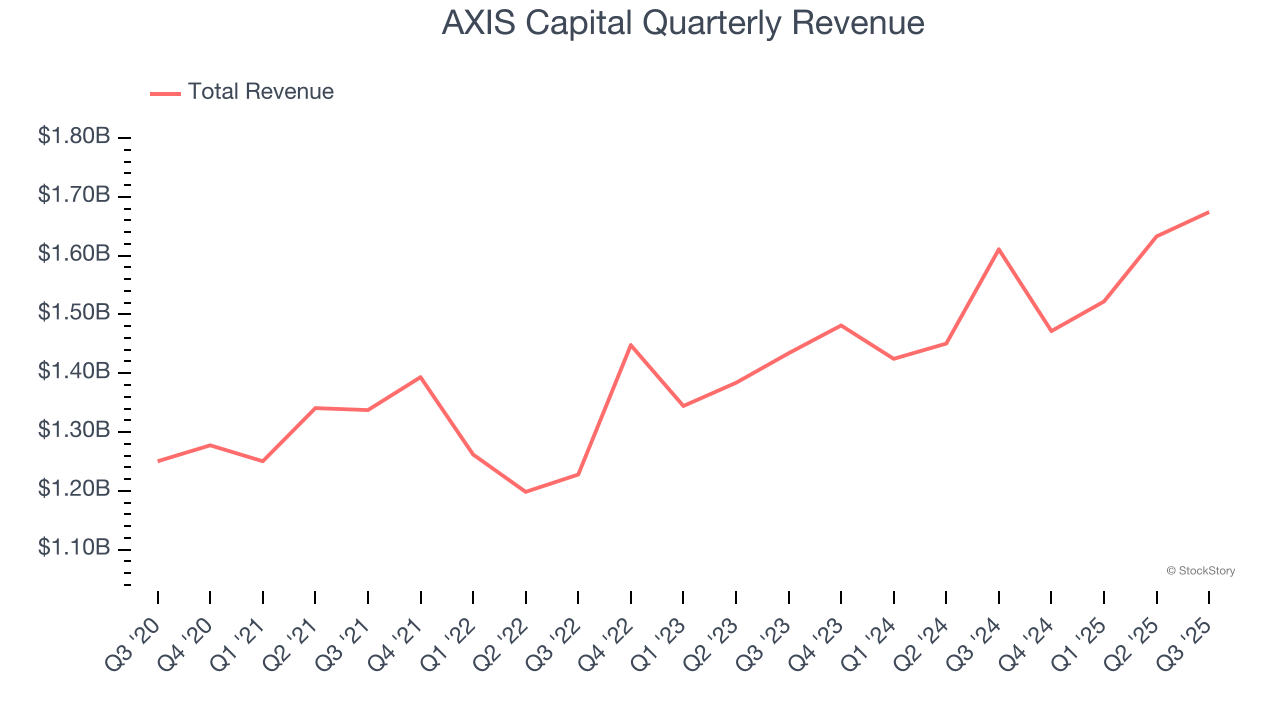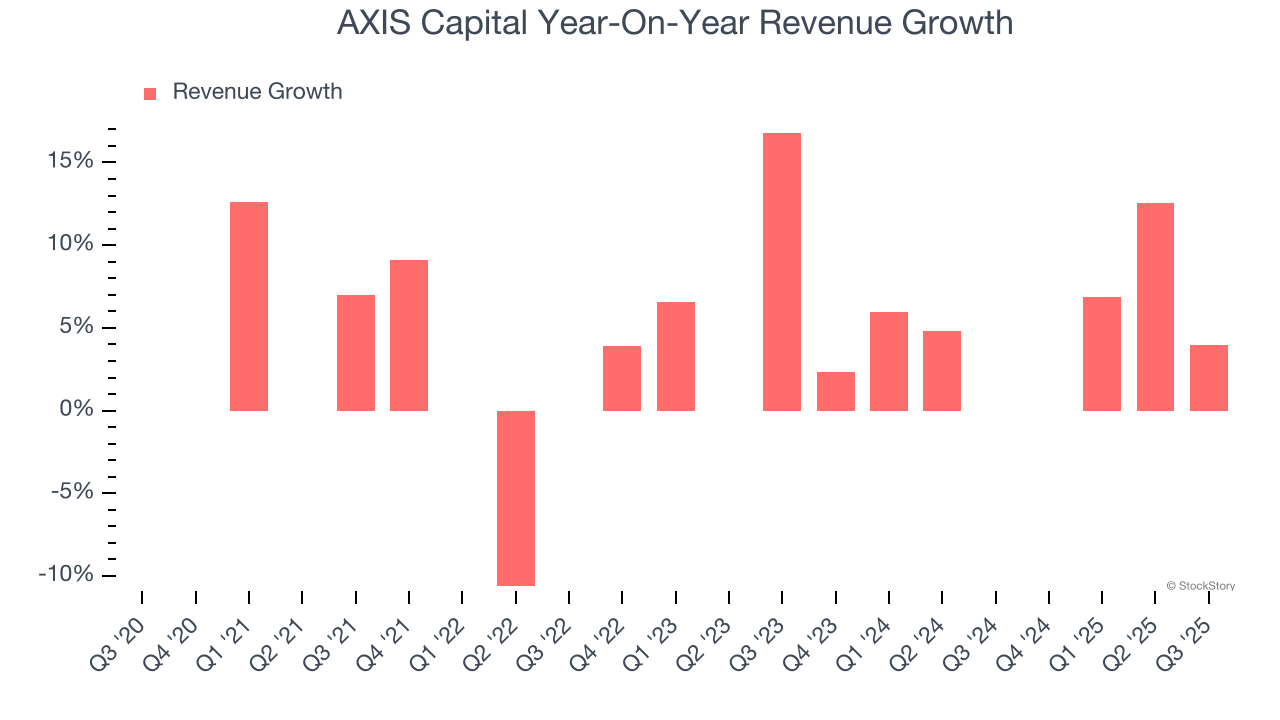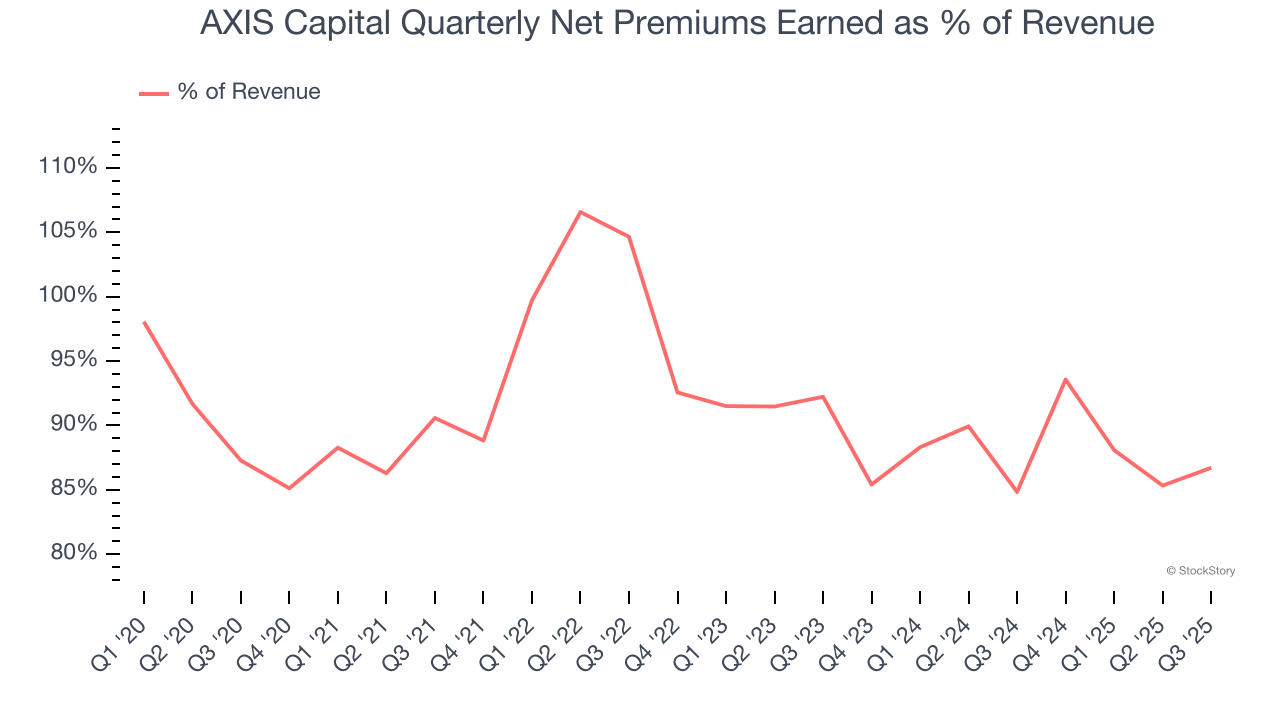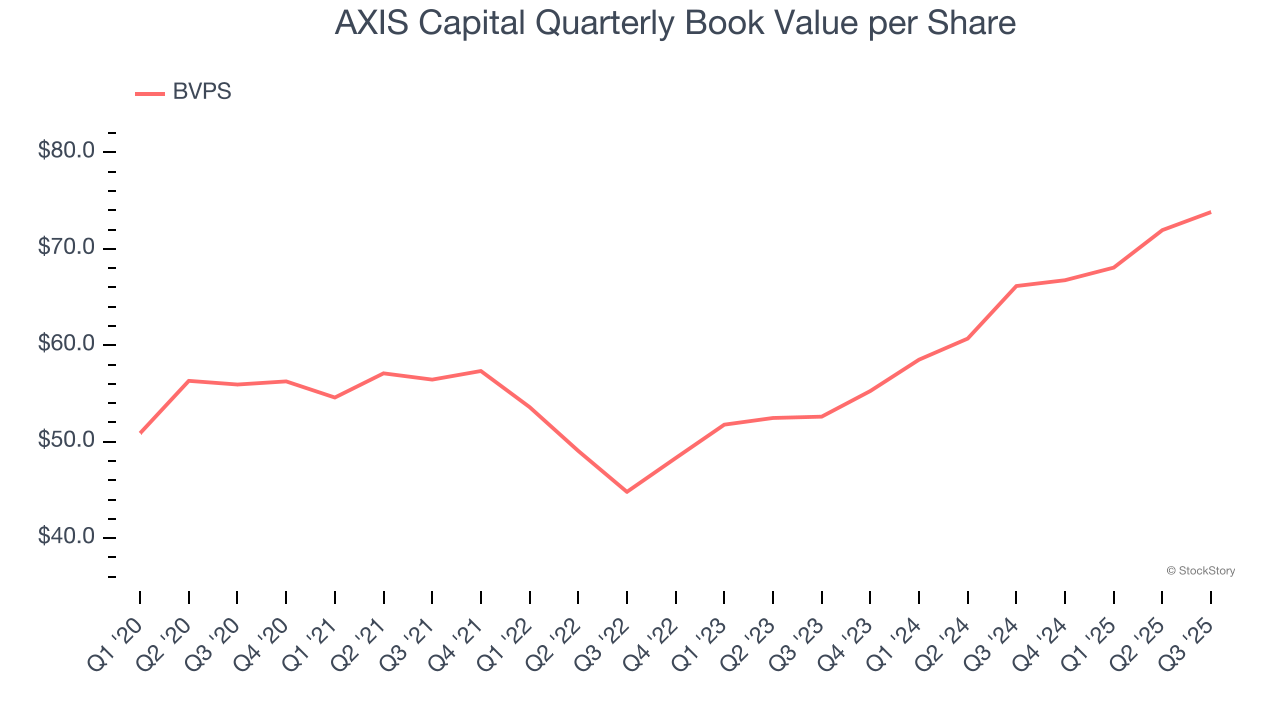
Global specialty insurer AXIS Capital Holdings Limited (NYSE: AXS) beat Wall Street’s revenue expectations in Q3 CY2025, with sales up 3.9% year on year to $1.67 billion. Its non-GAAP profit of $3.25 per share was 11.5% above analysts’ consensus estimates.
Is now the time to buy AXIS Capital? Find out by accessing our full research report, it’s free for active Edge members.
AXIS Capital (AXS) Q3 CY2025 Highlights:
- Net Premiums Earned: $1.45 billion vs analyst estimates of $1.45 billion (6.2% year-on-year growth, in line)
- Revenue: $1.67 billion vs analyst estimates of $1.65 billion (3.9% year-on-year growth, 1.4% beat)
- Combined Ratio: 89.4% vs analyst estimates of 91% (162.5 basis point beat)
- Adjusted EPS: $3.25 vs analyst estimates of $2.92 (11.5% beat)
- Book Value per Share: $73.82 vs analyst estimates of $73.96 (11.6% year-on-year growth, in line)
- Market Capitalization: $6.96 billion
Company Overview
Founded in the aftermath of the 9/11 attacks when insurance capacity was scarce, AXIS Capital Holdings Limited (NYSE: AXS) is a global specialty insurer and reinsurer that provides coverage for complex risks across property, liability, professional lines, cyber, and other specialty markets.
Revenue Growth
Insurance companies earn revenue from three primary sources: 1) The core insurance business itself, often called underwriting and represented in the income statement as premiums 2) Income from investing the “float” (premiums collected upfront not yet paid out as claims) in assets such as fixed-income assets and equities 3) Fees from various sources such as policy administration, annuities, or other value-added services. Over the last five years, AXIS Capital grew its revenue at a tepid 5.1% compounded annual growth rate. This was below our standard for the insurance sector and is a tough starting point for our analysis.

We at StockStory place the most emphasis on long-term growth, but within financials, a half-decade historical view may miss recent interest rate changes, market returns, and industry trends. AXIS Capital’s annualized revenue growth of 6% over the last two years aligns with its five-year trend, suggesting its demand was consistently weak.  Note: Quarters not shown were determined to be outliers, impacted by outsized investment gains/losses that are not indicative of the recurring fundamentals of the business.
Note: Quarters not shown were determined to be outliers, impacted by outsized investment gains/losses that are not indicative of the recurring fundamentals of the business.
This quarter, AXIS Capital reported modest year-on-year revenue growth of 3.9% but beat Wall Street’s estimates by 1.4%.
Net premiums earned made up 90.7% of the company’s total revenue during the last five years, meaning AXIS Capital lives and dies by its underwriting activities because non-insurance operations barely move the needle.

Net premiums earned commands greater market attention due to its reliability and consistency, whereas investment and fee income are often seen as more volatile revenue streams that fluctuate with market conditions.
Today’s young investors won’t have read the timeless lessons in Gorilla Game: Picking Winners In High Technology because it was written more than 20 years ago when Microsoft and Apple were first establishing their supremacy. But if we apply the same principles, then enterprise software stocks leveraging their own generative AI capabilities may well be the Gorillas of the future. So, in that spirit, we are excited to present our Special Free Report on a profitable, fast-growing enterprise software stock that is already riding the automation wave and looking to catch the generative AI next.
Book Value Per Share (BVPS)
Insurance companies are balance sheet businesses, collecting premiums upfront and paying out claims over time. The float–premiums collected but not yet paid out–are invested, creating an asset base supported by a liability structure. Book value per share (BVPS) captures this dynamic by measuring these assets (investment portfolio, cash, reinsurance recoverables) less liabilities (claim reserves, debt, future policy benefits). BVPS is essentially the residual value for shareholders.
We therefore consider BVPS very important to track for insurers and a metric that sheds light on business quality because it reflects long-term capital growth and is harder to manipulate than more commonly-used metrics like EPS.
AXIS Capital’s BVPS grew at a tepid 5.7% annual clip over the last five years. However, BVPS growth has accelerated recently, growing by 18.5% annually over the last two years from $52.60 to $73.82 per share.

Over the next 12 months, Consensus estimates call for AXIS Capital’s BVPS to grow by 14.4% to $73.96, top-notch growth rate.
Key Takeaways from AXIS Capital’s Q3 Results
It was good to see AXIS Capital beat analysts’ EPS expectations this quarter. We were also happy its revenue narrowly outperformed Wall Street’s estimates. Overall, this print had some key positives. The stock remained flat at $89 immediately after reporting.
AXIS Capital may have had a good quarter, but does that mean you should invest right now? When making that decision, it’s important to consider its valuation, business qualities, as well as what has happened in the latest quarter. We cover that in our actionable full research report which you can read here, it’s free for active Edge members.





